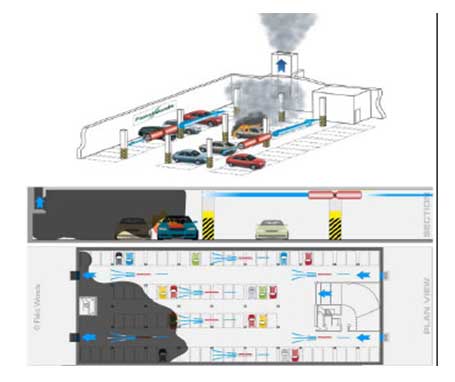FEIAP Green Design Guide – Non-Residential Building
(a) Carparks designed with natural ventilation.
Click Here to View Example 8
(b) CO sensors are used to regulate the demand for mechanical ventilation (MV).
- It is sensitive to a wide variety of gases but can be tuned to have preference for certain gases
- The accuracy of measurement of these devices can be significantly affected by changes in temperature and humidity
- Long life span – 2 to 10 years
1-7 Ventilation in Common Areas
Encourage the use of energy efficient design and control of ventilation systems in the following common areas:
(a) Toilets
(b) Staircases
(c) Corridors
(d) Lift lobbies
(e) Atriums
1-8 Lifts and Escalators
Encourage the use of efficient lifts and escalators.
(a) Lifts with the following energy efficient features:
1) AC variable voltage and variable frequency (VVVF) motor drive or equivalent.
2) Sleep mode features or equivalent.
- lift can be programmed to hibernate after a determined amount of time.
- Use LED light or fluorescent lamp
(b) MRL (machine room-less) A gearless lift uses up to 50% less energy than traction drive and 70% less energy than a hydraulic drive
(c) Escalators with energy efficient features such as motion sensors.
1-9 Energy Efficient Practices & Features
Encourage the use of energy efficient practices and features which are innovative and/or have positive environmental impact.
(a) Computation of energy consumption based on design load in the form of energy efficiency index (EEI).
(b) Use of energy efficient features:
Examples:
- Heat recovery system
- Motion sensors for staircase half landing
- Ductless fan for basement ventilation
- Sun pipes

